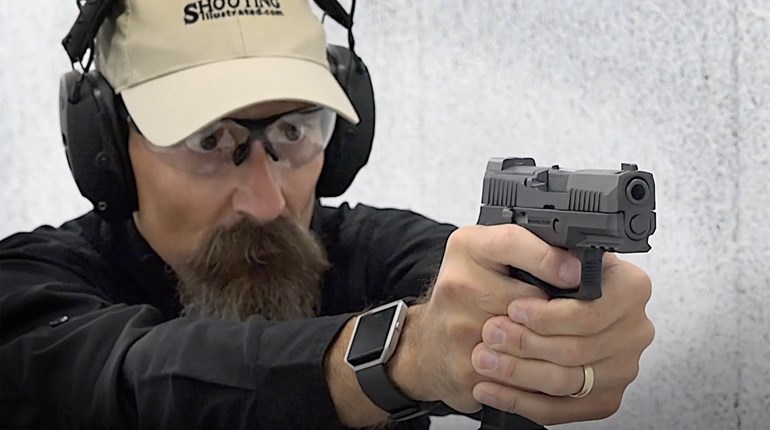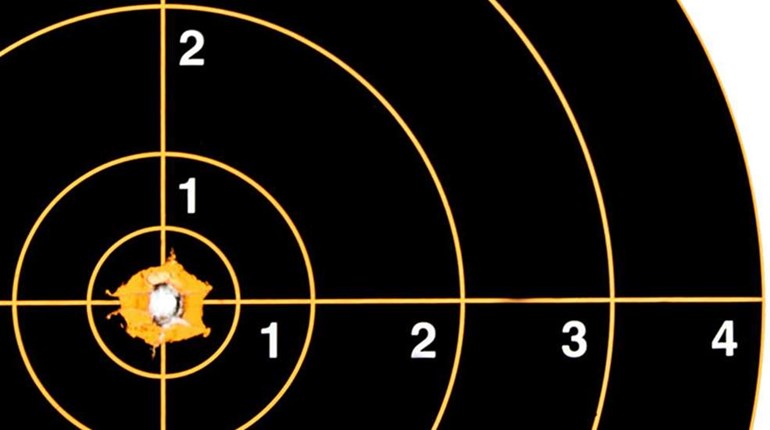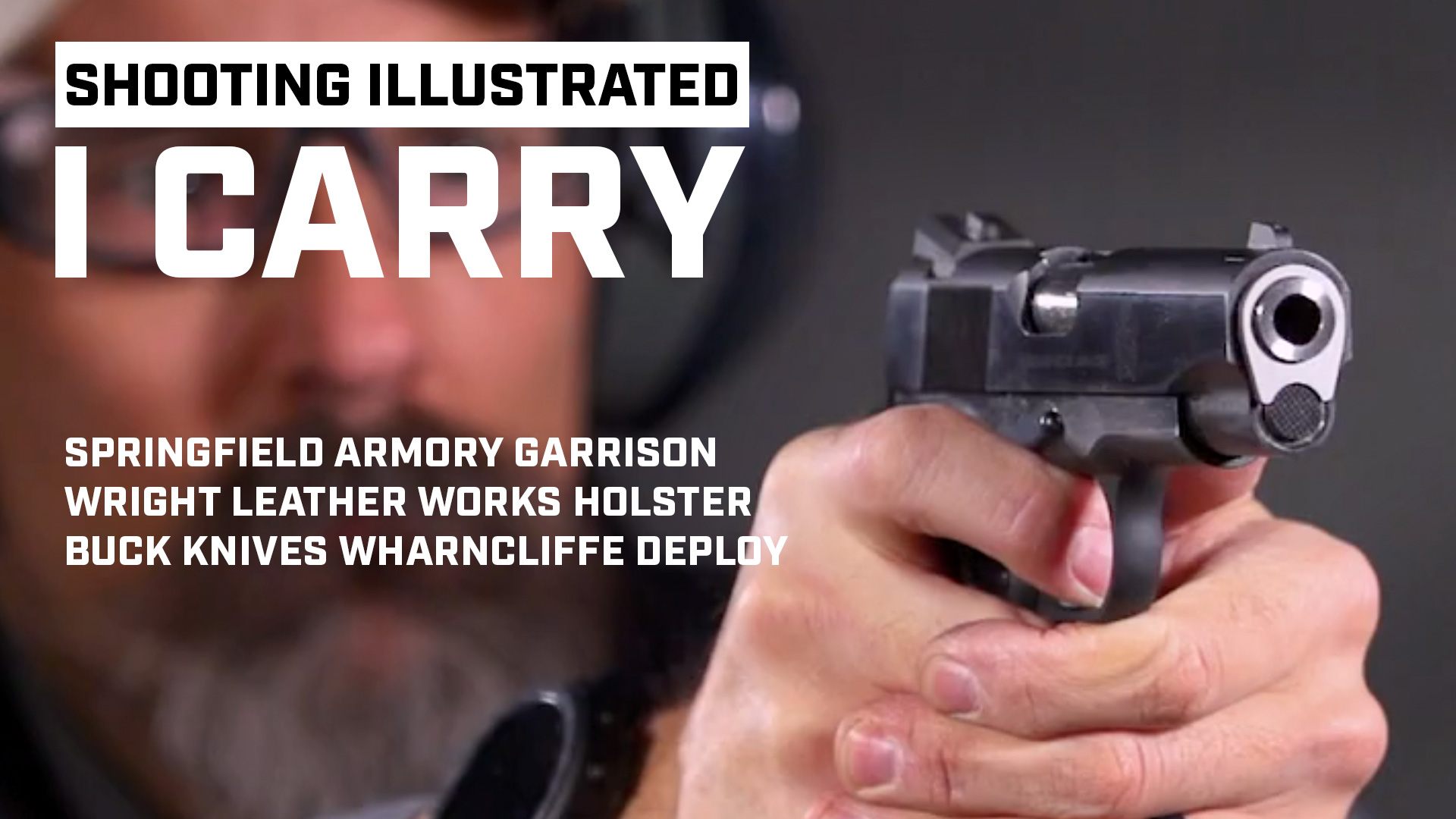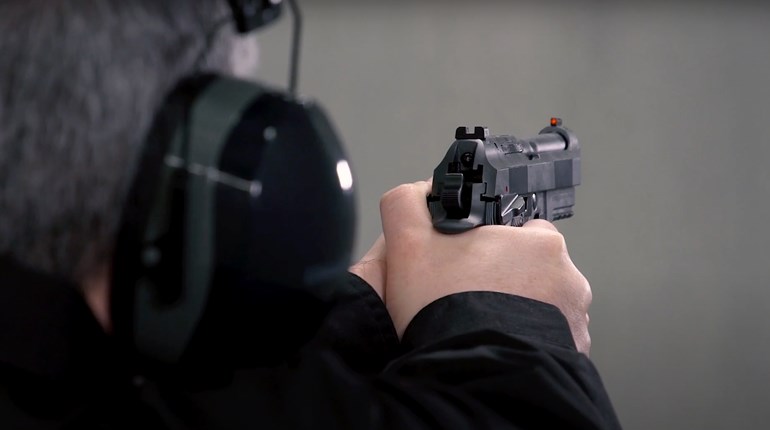
If you are a shooter seeking to elevate your skills to the next level a definitive milestone would be if your aimpoint, trigger point, impact point and recover point were all one and the same. A simple enough concept to grasp mentally, but not as easy a task to perform when held to a higher demand for accuracy and time.
You may be able to pull off a single shot and align all four points as a single point of convergence on a map. However, what about being able to repeat that single shot performance or place multiple shots on the same target or multiple shots on multiple targets and meeting with the same success?
Breaking this down into its subcomponent parts there are four consecutive actions referencing one single point in time and space. These are: the visual center of the target (aimpoint), the exact grid coordinates of where you triggered the gun (trigger point), where the bullet landed (impact point) and to where the muzzle (often indicated by your sights) returned. Optimal performance is defined as all four work efforts converging on a single point.
Single Shot
If firing only one round, the first of the four consecutive actions is to bring stability to the firearm and align the muzzle with the visual center of the target. The next action is to hold everything well enough in place as to not disturb the alignment of the muzzle with the visual center of the target as you press the trigger and break the round. The third action is the round finding its intended mark. The last action is for the muzzle (and sights) to return to the very same aimpoint, trigger point, and round placement point.
Should it be the case that you can perform this task successfully achieving single point convergence 85% of the time or better on demand, then it can be said that you have “mastered” this technique. Much easier said than done.
Using a pistol (coming from the draw) or a carbine (mounting from a slung position), moving the gun from its initial resting position and mounting it to a position of stability and alignment is what takes the most work. This initial movement, commonly referred to as ‘indexing’ must be done quickly and efficiently as to allow yourself adequate distribution of remaining time to precisely press off the round under the duress of being held accountable for both time and accuracy.
In the case of the single-shot-only requirement, the last and final action is to recover the muzzle to the same point, culminating in a four-action single-point convergence resulting in mission success.
Splits
The next shooting performance requirement following single-shot-only are multiple rounds on the same target.
Following the exact same formula as above the first of the four actions is to bring stability to the firearm and align the muzzle with the visual center of the target. Next is to apply hold control well enough as to maintain alignment of the muzzle with the visual center of the target as you press off the round. The third action is the round finding its mark.
The last action is for the muzzle (and sights) to return to the very same intended single point of convergence. The only difference here is that there is a multiple rounds requirement following the first round. In this case let’s pick an arbitrary number of five rounds. In other words, you are required to deliver five rounds from the holster (handgun) or slung position (carbine).
Emphasis is placed on each of the action items, but especially your recovery from muzzle rise as this sets the anchor for the next shot. Without it, which is a failure to realign, will cause the round to stairstep in one direction or the other based on the weakest control point of your grip or body fire control support frame. Little or no contact equates to little or no control. You can get away with loose or changing grip pressure on the very first shot but all subsequent breaks require optimum grip control, hold control and fire control. Only when each of these control elements are utilized will you achieve mission success on a five-round-on-one-target split drill.
Transitions
The difference between splits and transitions is a greater distance between the last round on T1 and the next round on T2. When working transitions yet again the first of the four actions is to bring stability to the firearm and align the muzzle with the visual center of the target. Then, apply hold control well enough to maintain alignment of the muzzle with the visual center of the target as you press off the round. The third action is the round finding its mark.
The last action is for the muzzle (and sights) to return this time not to the same aimpoint-trigger-point-impact point but to a new aimpoint on the next target. For example, pressing off one round on T1 with muzzle rising from recoil on T1 and recovering to a new aimpoint-trigger-point-impact-point on T2.
The magic is appropriately managing recoil rise and recovery. A transition may call for two rounds on T1, (four actions converging on a single point on T1 to include the second round), with the entire process starting over again on T2 for the next two rounds.
Single shot and same-target splits require your aimpoint, trigger point, impact point and recover point to be all one and the same – a single point convergence. Whereas transitions require recovery to an alternate aimpoint demanding the same trigger and impact point convergence.




































